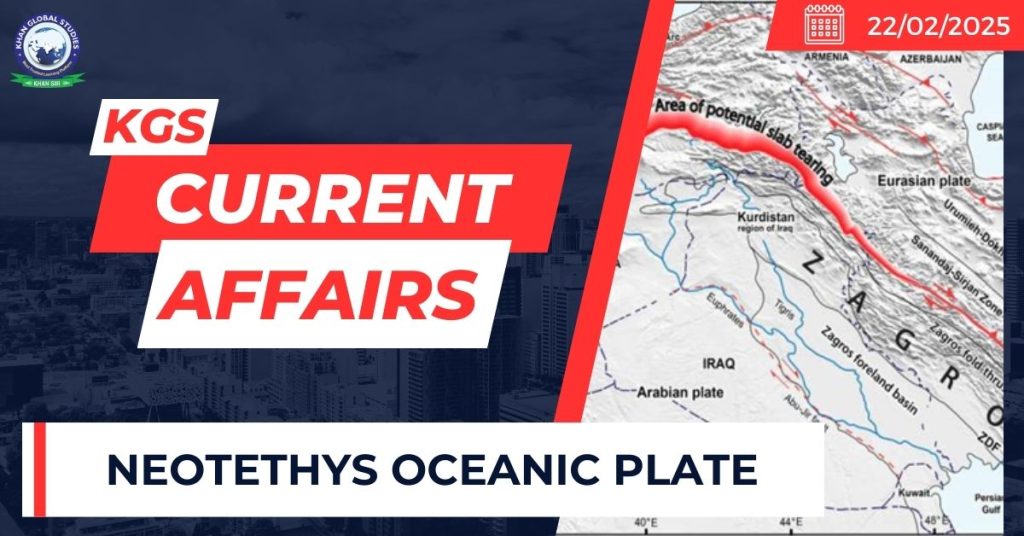Context:
The University of Göttingen’s study has revealed that the ancient Neotethys oceanic plate between the Arabian and Eurasian continental plates, is breaking apart under the Zagros Mountains in West Asia due to tectonic plate movements.

- The Neotethys oceanic slab, which formed the floor of an ancient ocean over 66 million years ago, is splitting between southeast Turkey and northwest Iran.
- The slab is sinking into the Earth’s mantle as part of the plate tectonic process.
- This process takes tens of millions of years and is complex.
- They found that the Neotethys slab is sinking and pulling the Zagros region of Iraq downward and this process is known as subduction.
- The depressions around the Zagros Mountains are deeper than expected, likely due to this sinking process.
About Neotethys Oceanic Plate
- It existed during most of the Mesozoic and early-mid Cenozoic Eras, tens of millions of years ago.
- It preceded the modern Indian Ocean, Mediterranean Sea, and Eurasian inland marine basins.
- As the Arabian and Eurasian landmasses converged, the oceanic slab was forced downward beneath the continents in a process of subduction.
- This subduction led to the closure of the Neotethys Ocean and this process contributed to the formation of the Zagros Mountains.
About Subduction Zone
- At a subduction zone, two tectonic plates collide, and one plate slides beneath the other, causing the lithosphere to curve down into the mantle.
- It often occurs because the oceanic lithosphere is denser than the continental lithosphere, causing the oceanic plate to sink beneath the continental plate.
- Oceanic-oceanic subduction occurs when older, denser oceanic lithosphere sinks beneath younger, more buoyant oceanic lithosphere.
- New oceanic lithosphere forms at plate separation zones, where hot mantle material rises to the surface and cools, becoming denser over time.
- The sinking plate or “slab” in a subduction zone bends at around 30 degrees from the Earth’s surface, although the angle can vary.
- Sometimes, these slabs can tear and break off, falling into the mantle, where they become weaker and more pliable over time instead of disappearing.
- Continental-continental collisions form collision zones, where plates crumple together, pushing material up (e.g., the Himalayas formed when the Indian plate collided with the Asian plate).


